Alongside his interview for The Strad Podcast, the cellist shares the manuals and resources that have informed his playing and teaching career so far

Discover more Featured Stories like this in The Strad Playing Hub
It was a pleasure to speak with Davina during our podcast chat. Following on from our conversation, here are a few thoughts as well as a list of books that have influenced me in recent times.
When I arrived back at Eastman to teach, I reached out to my mentor, colleague and friend, Steven Doane, to ask what manuals he might recommend. I wanted to further my knowledge and have more ideas to share with the students. I have since been digesting many materials that I wish I had the time for when I was younger. But it is better late than never!
From the initial suggestions, one thing led to another. Violin manuals have been around a lot longer, but the cello contributions to pedagogy have been increasing a tremendous amount over the last century. The earliest manual I have is by Jean Louis Duport (1749-1819), Essay on Fingering the Violoncello, and on the Conduct of the Bow, followed by Dorian Alexanian’s Complete Cello Technique published in 1922. I have also been influenced by some non-music related books that have helped inform my playing.
In terms of playing our instrument, we want to simplify everything, which is easier said than done! There is a whole web of connections that need to happen in order to find our flow. Breathing, posture and motion have such a big influence on our fluency around the instrument. Centering our mind and ourselves in a meditative way, keeping our awareness open, helps us to listen and indeed make the connections instinctively and intuitively. If we can just get out of the way, the music will guide us. We can start to interact more healthily and positively in the act of playing and doing. Playing is an important word. We are at play with our instrument, the music and ourselves. We want to be free to explore, as if the fingerboard is some sort of playground. Coordination and listening between the hands is part of a good balance, not only being present in the moment, but also anticipating what is to come.
We need to find out the message, whatever that may be, for ourselves. Take on the responsibility ourselves, and only through experience can we learn. Those ‘a-ha!’ moments often occur when we recognise information and it finally makes sense to us, or we are finally able to recognise the importance of the idea. Wisdom. It is a patient journey, not a sprint, but a marathon.
Those ‘a-ha!’ moments often occur when we recognise information and it finally makes sense to us
Here are some manuals and books that have influenced me:
Steven Doane, Ergonomics
Maurice Eisenberg, Cello Playing of Today (incidentally written for The Strad)
Diran Alexanian, Complete Cello Technique
Eugen Herrigel, Zen in the Art of Archery
Takuan, The Unfettered Mind (following on from Herrigel)
Ivan Galamian, Principles of Violin Playing & Teaching
Paul Rolland, The Teaching of Action in String Playing
Shin’ichi Suzuki, Nutured by Love
William Pleeth, Cello
David Blum, Casals and the Art of Interpretation
Paul Tortelier, How I play, How I teach
Anner Bylsma Bach, The Fencing Master, Droppings and the Happy Few
Steven Isserlis, The Bach Cello Suites
Gerhard Mantel, Cello Technique and Practising Etudes
Fred Sherry, A Grand Tour of Cello Technique
Evangeline Benedetti, Cello, Bow and You—Putting it all together
Millie Stanfield, The Intermediate Cellist
George Kennaway, Playing the Cello, 1780-1930
Steven De’ak, David Popper
Anthony Arnone, The Art of Listening
Christopher Bunting, Essays on the Craft of ‘Cello-Playing
Vivien Mackie, ‘Just Play Naturally’
Hans Jensen, Practice Mind
J Corredor, Conversations with Casals
Feldenkrais, Awareness Through Movement
F.M. Alexander, The Use of the Self
Bessel van der Kolk, The Body Keeps the Score
Stephen Cope, Yoga and the Quest for the True Self
Theodore Dimon, The Body in Motion—Its Evolution and Design
James Nestor, Breath: The New Science of a Lost Art
Percy Buck, Psychology for Musicians
Barry Green with Timothy Galwey, The Inner Game of Music
Eckhart Tolle, The Power of Now
Richard Alpert, Remember Be Here Now
Federico Garcia Lorca, In Search of Duende
Carol Dweck, Mindset
Helen Keller, The World I Live In & Optimism
Robert Pirsig, Zen and the Art of Motorcycle Maintenance – An Inquiry into Values
Henri Bergson, Creative Evolution
Susan Langer, Problems of Art
Emile Coué, Self Mastery through Conscious Autosuggestion
Clive Brown, Classical & Romantic Performing Practice 1750-1900
Listen to Guy Johnston speak on The Strad Podcast here
Read: Laurence Lesser: the making of a cellist
Read more Featured Stories like this in The Strad Playing Hub
The number one source for playing and teaching books, guides, CDs, calendars and back issues of the magazine.
In The Best of Technique you’ll discover the top playing tips of the world’s leading string players and teachers. It’s packed full of exercises for students, plus examples from the standard repertoire to show you how to integrate the technique into your playing.
The Strad’s Masterclass series brings together the finest string players with some of the greatest string works ever written. Always one of our most popular sections, Masterclass has been an invaluable aid to aspiring soloists, chamber musicians and string teachers since the 1990s.
American collector David L. Fulton amassed one of the 20th century’s finest collections of stringed instruments. This year’s calendar pays tribute to some of these priceless treasures, including Yehudi Menuhin’s celebrated ‘Lord Wilton’ Guarneri, the Carlo Bergonzi once played by Fritz Kreisler, and four instruments by Antonio Stradivari.

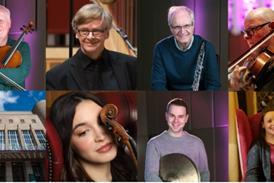
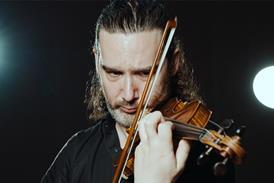






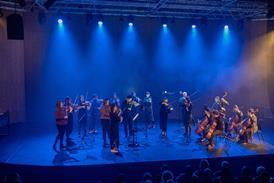
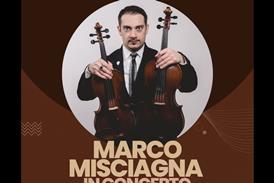
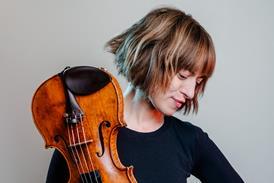
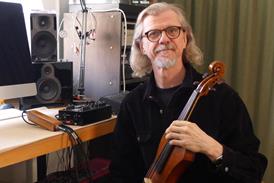



















No comments yet